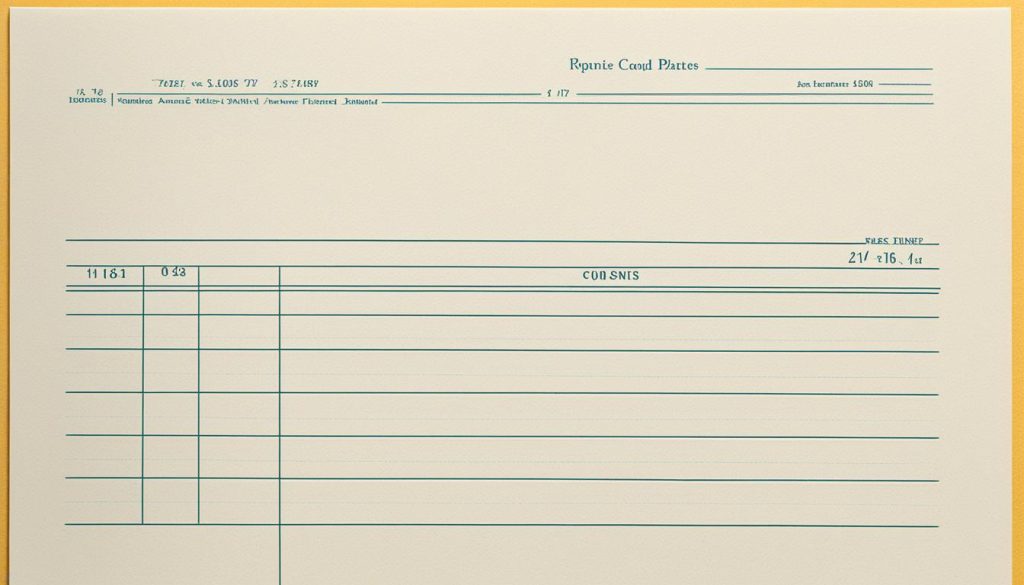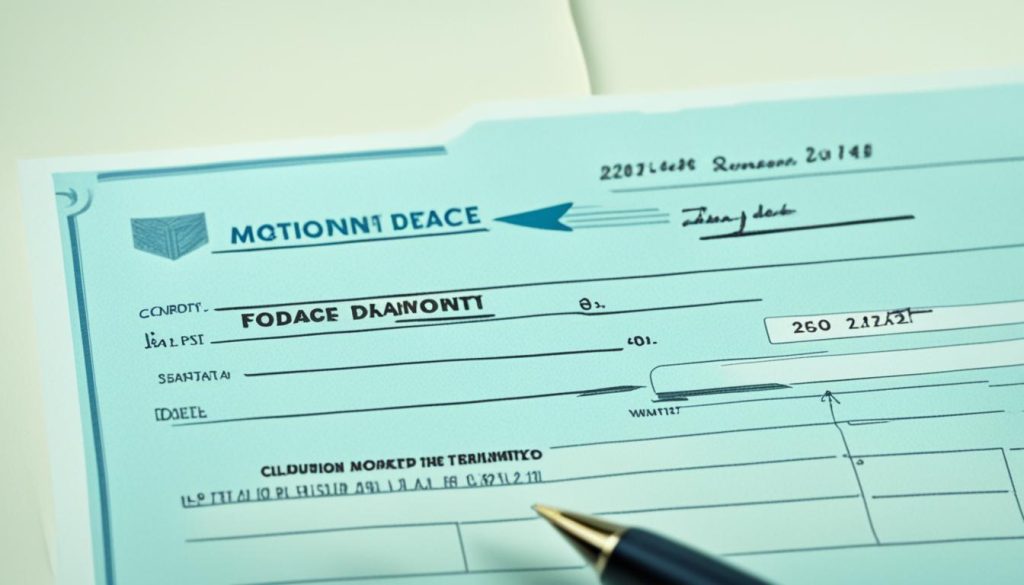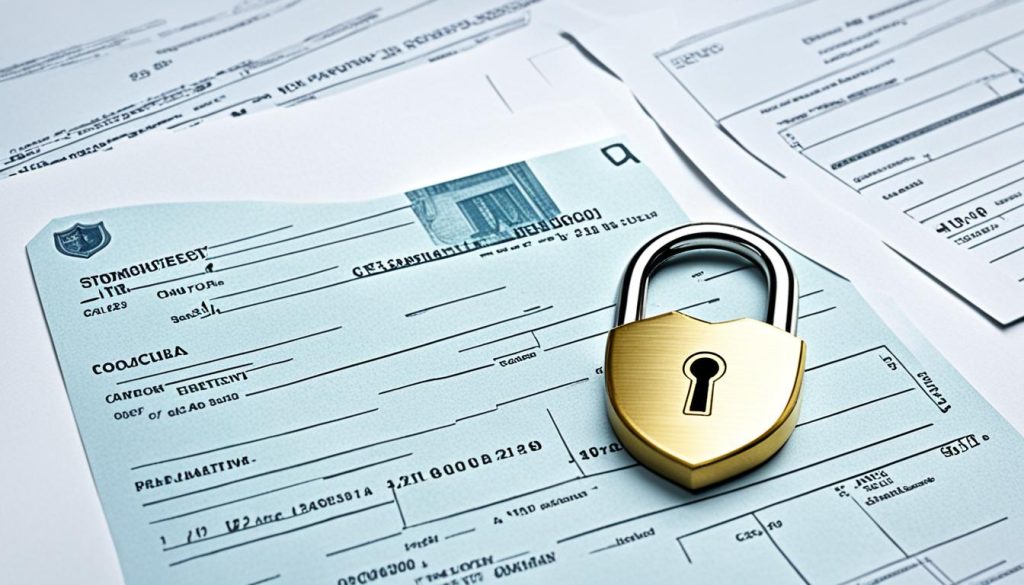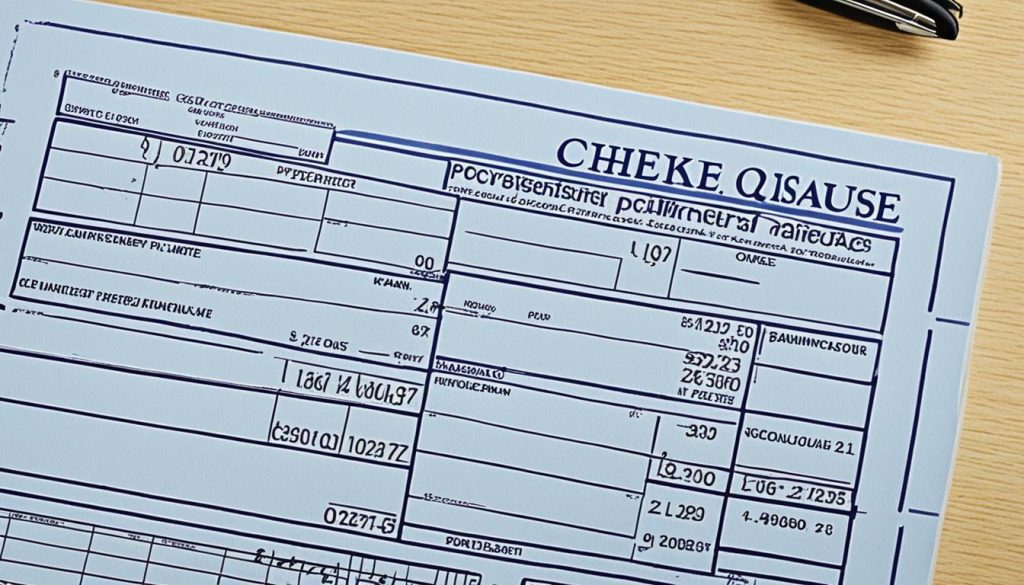Are you unsure about how to write a cheque properly? Don’t worry; we’ve got you covered. Writing a cheque with accuracy and precision is essential to ensure secure transactions. In this comprehensive guide, we will walk you through the process of filling out a cheque step by step, providing you with all the necessary information you need to know.
Components of a Cheque
A cheque is composed of several essential components that work together to ensure accurate and secure transactions. Understanding the various parts of a cheque is crucial for proper cheque writing and adherence to cheque format:
1. Drawer’s Personal Details:
The top-left corner of a cheque contains the drawer’s personal information, including their name, address, and contact details. This information helps identify the individual or organization issuing the cheque.
2. Cheque Number:
The cheque number is a unique identifier assigned to each cheque. It appears in the top-right corner and is used for tracking purposes, providing a reference number for future recordkeeping.
3. Date Line:
The date line is where the date of the cheque is written. It is crucial to accurately enter the date to prevent any discrepancies or complications with cheque clearance.
4. Payee Line:
The payee line is where the name of the person or entity receiving the payment is written. Care must be taken to spell the payee’s name correctly to ensure the cheque is valid.
5. Box and Line for the Dollar Amount:
The dollar amount to be paid is written both in numeric form and in words. The box provides space for writing the amount in numbers, while the line allows for writing the amount in words, including the currency. Ensuring consistency between the numeric and written amounts is crucial to avoid discrepancies and potential fraud.
6. Memo Line:
The memo line provides space for adding a brief note or reference regarding the purpose of the payment. This information can be helpful for personal recordkeeping or to clarify the transaction’s details.
7. Bank’s Name, Routing, and Account Numbers:
The cheque should include the bank’s name where the drawer holds their account, as well as the routing number and account number associated with the drawer’s account. These details are essential for accurate processing and identification of the financial institution involved.
8. Signature Line:
The signature line is where the drawer signs the cheque, confirming their authorization and consent for the payment. The signature must match the authorized signature on record with the bank to ensure the cheque’s validity and prevent fraud.
Understanding these various components of a cheque and accurately filling them out is crucial for the smooth and secure processing of cheque transactions.

How to Write a Cheque?
Writing a cheque correctly involves several important steps to ensure accuracy and security. Follow these simple instructions to complete a cheque properly:
- Date: Begin by writing the current date in the top right-hand corner of the cheque. Use the day, month, and year format (e.g., 12th March 2022).
- Payee’s Name: On the line that says “Pay to the order of,” write the name of the person or organization you are paying. Make sure to spell it correctly and include any necessary titles or designations.
- Amount in Words: Write the amount in words on the line below the payee’s name. Use capital letters and include the word “only” after the amount to avoid any alterations or additions. For example, if the amount is £50, write “Fifty pounds only.”
- Amount in Numbers: In the box on the right-hand side of the cheque, write the amount in numbers. Make sure the numbers match the amount you wrote in words.
- Signature: Sign the cheque using your full signature. This ensures the cheque is valid and authorized by you as the account holder.
- Memo (optional): If needed, you can include a memo in the memo line to remind yourself or the payee about the purpose of the payment. This can be useful for reference or clarification later.
It is crucial to fill out the cheque accurately and legibly to avoid any potential errors. Double-check all the details, including the date, payee’s name, amount in words and numbers, and your signature, before submitting the cheque. Additionally, keep a record of the cheque in a cheque register book or spreadsheet, noting down the cheque number, date, payee, and amount for future reference.

| Steps | Description |
|---|---|
| Date | Write the current date in the top right-hand corner. |
| Payee’s Name | Write the payee’s name on the “Pay to the order of” line. |
| Amount in Words | Write the amount in words below the payee’s name. |
| Amount in Numbers | Write the amount in numbers in the box on the right-hand side. |
| Signature | Sign the cheque using your full signature. |
| Memo (optional) | Include a memo to indicate the purpose of the payment. |
Tips for Writing a Cheque
When writing a cheque, it is important to avoid common mistakes and prioritize cheque security. By following these tips, you can ensure the accuracy, validity, and safety of your cheques.
Mistakes to Avoid when Writing a Cheque
- Leaving too many spaces between words: Ensure that there are no unnecessary gaps between the words when filling out a cheque. This helps prevent alterations or tampering.
- Not using the word “only” after the amount in words: Always include the word “only” after writing the amount in words to specify that the cheque is only payable for that exact amount.
- Overwriting: Avoid making corrections or overwriting on a cheque. Any changes should be made by voiding the existing cheque and issuing a new one.
- Signing over the MICR band: The MICR band, which contains important bank information, should not be signed. Sign only on the designated signature line.
- Filling in the incorrect date format: Use the correct date format specified on the cheque, typically in day-month-year order (e.g., 28th January 2023).
Cheque Security Tips
- Keep track of your cheques: Maintain a log or record of the cheques you write, including the cheque number, date, payee name, and amount. This helps in reconciling your bank statements and identifying any discrepancies.
- Never hand over a cheque with only a signature: Always ensure that the proper details, including the payee name, date, and amount, are completed on the cheque before providing it to the recipient.
- Add payee name, date, and amount to avoid misuse: To prevent unauthorized alterations or misuse, write the payee name, date, and amount as close to the left margin as possible.
- Write additional details on the backside of the cheque for bill payments: If making a payment for bills, consider writing additional details such as an account number or invoice number on the backside of the cheque as a reference.
- Maintain consistency in your signature: Sign your cheques using a consistent and recognizable signature. This helps prevent fraudulent activities.
- Check for spelling errors: Double-check the accuracy of all information including the payee name, date, and amount, to avoid any confusion or errors.
- Double-check the cheque before submitting it to the bank: Before depositing or mailing a cheque, review all the details to ensure they are correct. This includes verifying the payee name, date, and amount.
By following these tips, you can minimize errors, enhance cheque security, and ensure that your cheques are properly filled out, reducing the risk of fraud or complications.

Understanding Cheque Components in Detail
Each component of a cheque plays a crucial role in the transaction process. Let’s take a closer look at the key elements:
Cheque Number
The cheque number is a unique identifier that helps track the cheque’s usage and serves as a reference for record-keeping.
Amount in Figures
The amount in figures represents the numerical value of the payment and ensures accuracy in the transaction. This eliminates any confusion regarding the payment amount.
Pre-dated Cheque
A pre-dated cheque is one that is written with a future date. This allows the drawer to make a payment in advance, ensuring the cheque is not deposited before the intended date.
Crossed Cheque
A crossed cheque has two parallel lines across the top left corner. This action indicates that the cheque can only be deposited into a bank account and cannot be cashed over the counter. It enhances the security and traceability of the transaction.
“Account Payee” Cheque
An “account payee” cheque has the words “account payee” written between the lines. This designation ensures that the cheque can only be deposited into the payee’s bank account and prevents unauthorized individuals from cashing it.
Cheque Memo Line
The memo line on a cheque provides additional information about the purpose of the payment or the associated account number. This helps both the drawer and the payee keep track of the transaction details.
Understanding these cheque components is essential for accurate and secure financial transactions. Now, let’s visualize their importance in the table below:
| Component | Description |
|---|---|
| Cheque Number | Unique identifier for the cheque |
| Amount in Figures | Numerical value of the payment |
| Pre-dated Cheque | Cheque written with a future date |
| Crossed Cheque | Lines indicating deposit-only status |
| “Account Payee” Cheque | Restricted to payee’s bank account |
| Cheque Memo Line | Additional information about the payment |
The understanding of these components ensures the smooth processing of cheques, prevents unauthorized use, and provides clear records for all parties involved.
Importance of Recording Cheque Details
Recording cheque details is crucial for keeping track of payments and preventing any discrepancies or misuse. Whether you have a cheque book or not, it is important to maintain a record of your cheque transactions. In order to ensure accurate financial management, it is recommended to fill out a cheque register book or use a spreadsheet to record all the necessary information.
Key details that should be recorded include the cheque number, date, amount, and a brief summary of the payee. By maintaining a clear overview of the cheques issued and payments made, you can easily monitor your financial transactions.
If you have a cheque book, a cheque register book is the ideal tool for recording cheque details. This way, you can easily refer back to previous transactions and reconcile your bank statements. It helps you keep track of your spending and maintain a comprehensive view of your financial activities.
In case you don’t have a cheque book, using a spreadsheet or any other form of recording the information is recommended. This ensures that you have a reference for future transactions and provides a systematic approach to managing your finances.
By properly recording cheque details, you will be able to identify any discrepancies or unauthorized transactions. This allows you to take immediate action and ensures that your finances are in order.

Alternatives to Writing Checks
While writing checks is still a valid payment method, there are alternative options that are more convenient and efficient. Embracing these alternatives can help save time, reduce the risk of errors, and provide an electronic record of transactions.
Pay Bills Online
One of the most popular alternatives to writing checks is to pay bills online. This method allows for automatic payments, eliminating the need to write and mail physical checks. By setting up online bill payment with your bank or service provider, you can schedule recurring payments for utilities, rent, subscriptions, and more. This not only saves time and effort but also ensures timely payments and reduces the risk of late fees or penalties.
Get a Debit Card
Another convenient and trackable payment method is to get a debit card. With a debit card, you can make electronic payments directly from your bank account. It provides a quick and hassle-free way to pay for goods and services both online and in-person. Debit cards are widely accepted, making them a versatile alternative to writing checks. Additionally, you can easily track your spending through your bank statements, providing better financial management and oversight of your expenses.
Set up Automatic Payments
To ensure hassle-free payments for regular expenses, consider setting up automatic payments. This option is particularly useful for recurring bills such as utility bills, insurance premiums, and loan payments. By authorizing automatic payments with your service providers or bank, the payment will be deducted from your account on the scheduled due date. It eliminates the need to remember and manually process payments, ensuring you never miss a payment and reducing the risk of late fees or penalties.
The Benefits of Alternative Payment Methods
Exploring these alternative payment methods brings several advantages. Not only do they provide convenience and efficiency in managing your personal finances, but they also offer enhanced security and accuracy. The ability to pay bills online with automatic payments eliminates the risks associated with manually writing and mailing checks. Debit cards provide a secure electronic payment method, reducing the reliance on physical checks. By embracing these alternatives, you can experience streamlined financial transactions and better control over your money.
| Payment Method | Key Benefits |
|---|---|
| Pay Bills Online |
|
| Get a Debit Card |
|
| Set up Automatic Payments |
|
Conclusion
Writing a cheque correctly is an important skill for anyone in the UK who needs to make secure and accurate payments. By understanding the components of a cheque and following the steps to write one, individuals can ensure that their cheques are properly filled out and processed. It is also crucial to keep in mind the tips for accuracy and security, such as avoiding common mistakes and maintaining consistency in signatures. Recording cheque details in a register book or spreadsheet helps in maintaining financial records and prevents any confusion or misuse.
However, with the advancement of technology, there are alternative payment methods that offer more convenience and efficiency. Online bill payment allows for automatic payments, while getting a debit card provides a trackable payment method. Setting up automatic payments for regular expenses like rent and utility bills ensures timely and hassle-free transactions. Exploring these options can simplify the management of personal finances.
Whether it is for rent, cash withdrawal, or a wedding gift, knowing how to write a cheque ensures smooth transactions and proper financial management. By mastering this skill and staying informed about evolving payment methods, individuals can confidently navigate the changing landscape of personal finance in the UK.

